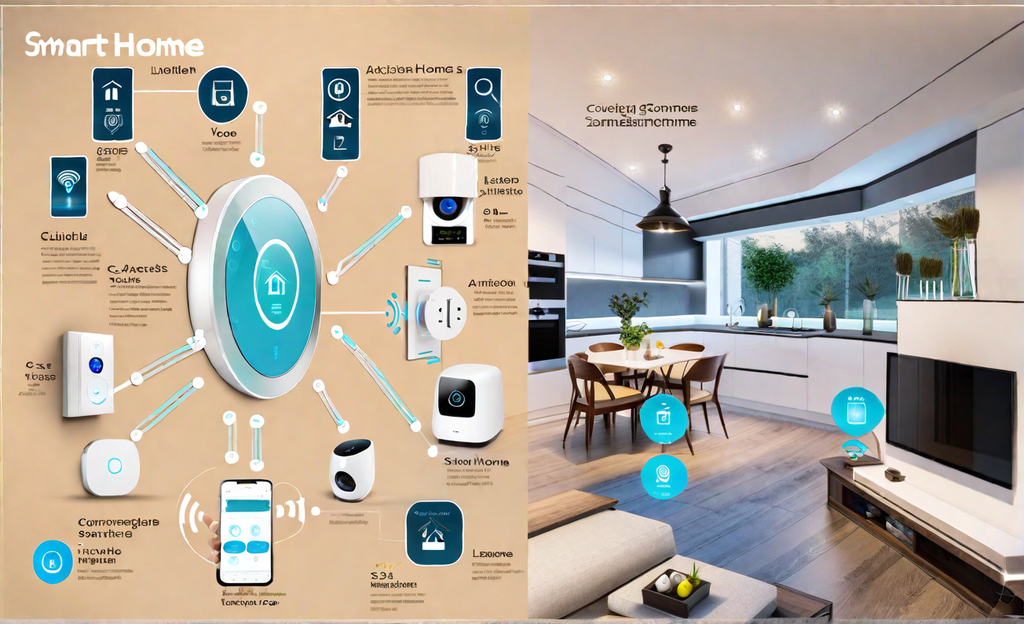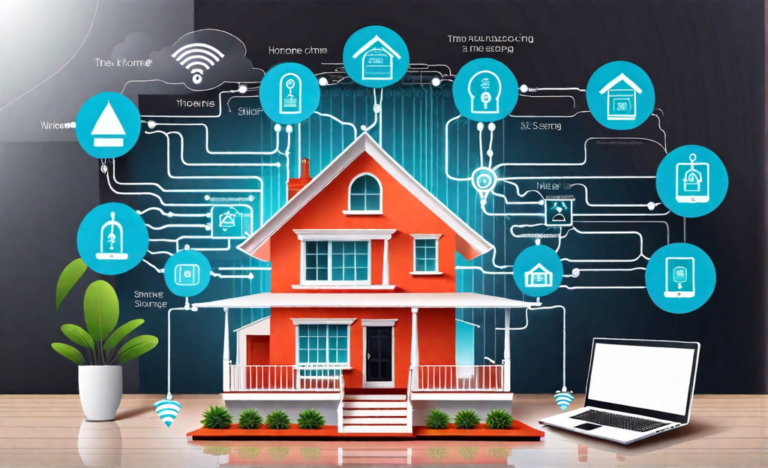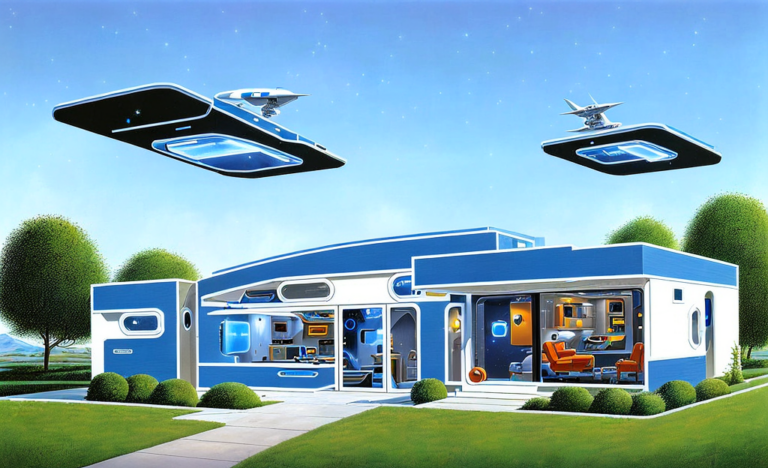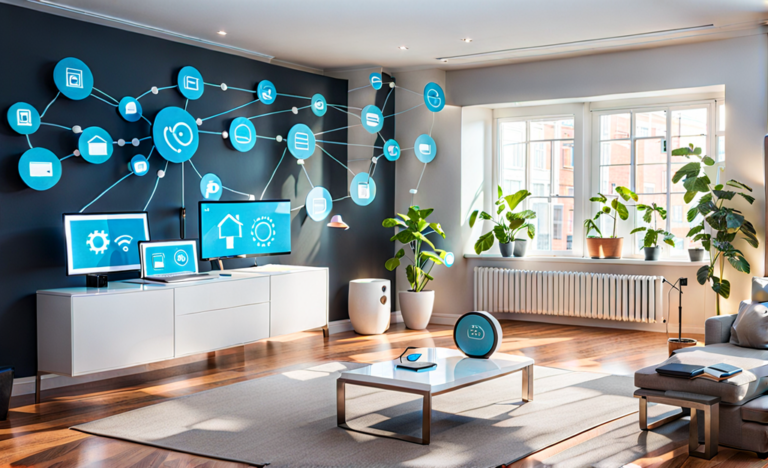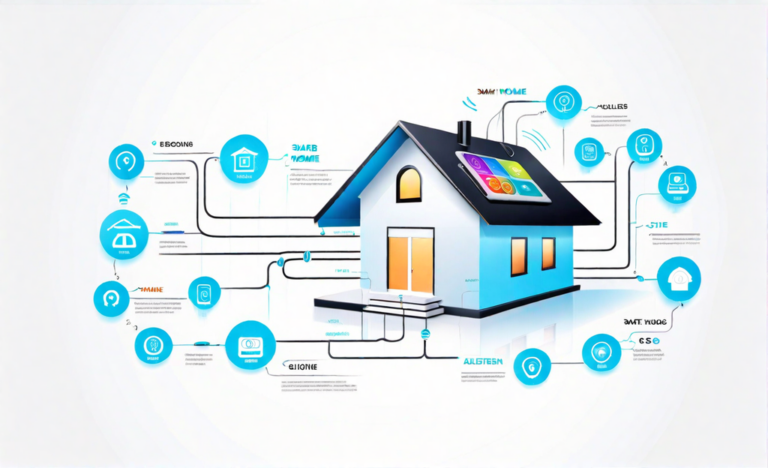Smart Home Technologies: A Comprehensive Overview
Smart home technologies are internet-connected devices that can be controlled remotely using a smartphone, tablet, or computer. These devices can be used to automate tasks, such as turning on lights, adjusting the thermostat, and locking doors, or to provide information about the home, such as whether the doors and windows are locked or if there is any movement in the house.
Smart home technologies are becoming increasingly popular as they offer a number of benefits, including:
- Convenience: Smart home devices can make life easier and more convenient by allowing users to control their homes from anywhere in the world.
- Energy efficiency: Smart thermostats and other devices can help users to save energy and money by automatically adjusting the temperature and other settings based on the user’s needs.
- Security: Smart security systems can help to protect homes from intruders by sending alerts to the user’s smartphone if there is any suspicious activity.
- Peace of mind: Smart home devices can give users peace of mind knowing that they can check on their homes at any time from anywhere in the world.
There are a wide variety of smart home devices available on the market, including:
- Smart thermostats: Smart thermostats can learn the user’s heating and cooling preferences and then automatically adjust the temperature to save energy and money.
- Smart lights: Smart lights can be turned on and off remotely, and can also be programmed to turn on and off automatically at certain times of the day.
- Smart locks: Smart locks can be locked and unlocked remotely using a smartphone or tablet.
- Smart security systems: Smart security systems can monitor for intruders, fire, and other hazards, and can send alerts to the user’s smartphone if there is any suspicious activity.
- Smart doorbells: Smart doorbells allow users to see and speak to visitors at their door even if they are not home.
- Smart speakers: Smart speakers can be used to control other smart home devices, play music, and get information about the weather, traffic, and more.
Smart home technologies can be integrated into a variety of home automation systems. Home automation systems allow users to control multiple smart home devices from a single app or interface. Some of the most popular home automation systems include:
- Amazon Alexa: Amazon Alexa is a voice-activated assistant that can be used to control smart home devices, play music, get information, and more.
- Google Assistant: Google Assistant is a voice-activated assistant that can be used to control smart home devices, get information, and more.
- Apple HomeKit: Apple HomeKit is a home automation system that allows users to control smart home devices using their iPhone, iPad, or Mac.
- Samsung SmartThings: Samsung SmartThings is a home automation system that allows users to control smart home devices from a variety of devices, including smartphones, tablets, and TVs.
How to get started with smart home technologies
If you are interested in getting started with smart home technologies, there are a few things you need to do:
- Choose a home automation system. The first step is to choose a home automation system. This will allow you to control all of your smart home devices from a single app or interface.
- Choose the right smart home devices. Once you have chosen a home automation system, you need to choose the right smart home devices for your needs. There are a wide variety of smart home devices available, so it is important to choose devices that are compatible with your home automation system and that meet your specific needs.
- Install the smart home devices. Once you have chosen your smart home devices, you need to install them. This process will vary depending on the device, but most smart home devices are easy to install.
- Connect the smart home devices to your home automation system. Once the smart home devices are installed, you need to connect them to your home automation system. This process will also vary depending on the device, but most home automation systems make it easy to connect smart home devices.
Benefits of smart home technologies
Smart home technologies offer a number of benefits, including:
- Convenience: Smart home devices can make life easier and more convenient by allowing users to control their homes from anywhere in the world.
- Energy efficiency: Smart thermostats and other devices can help users to save energy and money by automatically adjusting the temperature and other settings based on the user’s needs.
- Security: Smart security systems can help to protect homes from intruders by sending alerts to the user’s smartphone if there is any suspicious activity.
- Peace of mind: Smart home devices can give users peace of mind knowing that they can check on their homes at any time from anywhere in the world.
Here’s a more extensive summary of its uses:
Home Automation: Simplifying Daily Tasks
One of the primary goals of smart home technologies is to automate daily tasks and improve convenience. Here are some key areas where automation plays a significant role:
1. Lighting Control
Smart lighting systems like Philips Hue and LIFX offer customizable lighting solutions. You can adjust the brightness, color, and scheduling from your smartphone or voice-activated devices like Amazon Echo and Google Nest.
2. Thermostat Control
Smart thermostats such as Nest and ecobee learn your preferences and adjust heating and cooling systems accordingly. They can also be controlled remotely, helping you save on energy bills.
3. Security Automation
Smart security systems like Ring and Arlo provide real-time monitoring and alerts. Motion-activated cameras, doorbell cameras, and smart locks offer increased safety and control over your property.
4. Voice Assistants
Voice-activated assistants like Amazon’s Alexa and Apple’s Siri are the centerpieces of many smart homes. They control various devices and answer questions, making tasks like setting timers or searching for information hands-free.
Home Entertainment: The Ultimate in Entertainment
Entertainment is another domain where smart home technologies excel. Here are some ways they enhance your home entertainment experience:
1. Smart TVs
Smart TVs, equipped with internet connectivity, allow you to stream content from platforms like Netflix, Amazon Prime, and YouTube. Some models also come with voice control for hands-free operation.
2. Streaming Devices
Devices like Roku, Apple TV, and Amazon Fire Stick turn standard TVs into smart TVs, providing access to a wide range of streaming services.
3. Sound Systems
Smart sound systems, such as Sonos, can be controlled from your smartphone and offer multi-room audio capabilities for seamless music playback.
Kitchen and Cooking: Culinary Innovation
Smart home technologies are also making their mark in the kitchen, simplifying cooking and meal preparation:
1. Smart Appliances
Refrigerators, ovens, and dishwashers equipped with smart features can be controlled remotely, helping you monitor and manage your kitchen appliances more efficiently.
2. Smart Cooking Devices
From smart coffee makers to precision cookers, devices like the Instant Pot and Anova Culinary make cooking more convenient and precise.
Home Security: Protecting Your Castle
Security is a significant concern for homeowners, and smart home technologies offer a wide array of solutions:
1. Smart Locks
Smart locks like August and Schlage allow you to control access to your home via your smartphone. You can grant access to guests or service providers remotely and receive notifications of any unauthorized entry attempts.
2. Video Doorbells
Video doorbells like Ring and Nest provide real-time video feeds of your doorstep. You can see who’s at the door, communicate with visitors, and even receive package delivery alerts.
3. Smart Sensors
Motion detectors, door/window sensors, and glass break detectors enhance your home’s security by alerting you to suspicious activity.
Energy Efficiency: Saving Resources and Costs
Smart home technologies are also contributing to greater energy efficiency:
1. Smart Thermostats
Devices like the Nest Learning Thermostat and ecobee4 learn your heating and cooling preferences and adjust them to save energy and reduce utility bills.
2. Energy Monitoring Systems
Smart plugs and energy monitoring systems help you identify energy-consuming devices and schedule them to reduce consumption during peak hours.
Health and Wellbeing: A Holistic Approach
Smart home technologies extend to health and wellbeing, offering benefits like:
1. Fitness Trackers
Wearable fitness trackers like Fitbit and smart scales help you monitor your health and fitness progress.
2. Air Quality Monitors
Air quality monitors assess indoor air quality, detecting pollutants and providing insights to improve the wellbeing of your household.
Challenges and Considerations
While the benefits of smart home technologies are clear, there are challenges to consider:
1. Interoperability
Ensuring that various smart devices from different manufacturers work seamlessly together can be a challenge. The lack of standardization across the industry can lead to compatibility issues.
2. Privacy and Security
Smart home devices collect data about your habits, which can raise privacy concerns. Robust security measures are essential to prevent unauthorized access to your smart home ecosystem.
3. Initial Costs
The upfront costs of smart home technologies, including purchasing devices and setting up a network, can be relatively high. However, the potential savings and convenience often justify this investment.
4. Learning Curve
For those less familiar with technology, there can be a learning curve when setting up and using smart home devices. However, most systems are designed to be user-friendly.
The Future of Smart Home Technologies
As technology continues to advance, the future of smart home technologies looks promising:
1. Enhanced Integration
Increasing interoperability and standardization will enable more seamless integration between devices and platforms, making smart homes even smarter.
2. Artificial Intelligence
AI will play a more significant role in optimizing energy efficiency, security, and home automation.
3. Voice and Gesture Control
Voice and gesture recognition will become more refined, offering a more intuitive and convenient user experience.
4. Sustainability
Smart homes will contribute to greater sustainability by optimizing energy consumption and reducing waste.
Smart home technologies are rapidly reshaping our daily lives, offering convenience, security, and energy efficiency.
